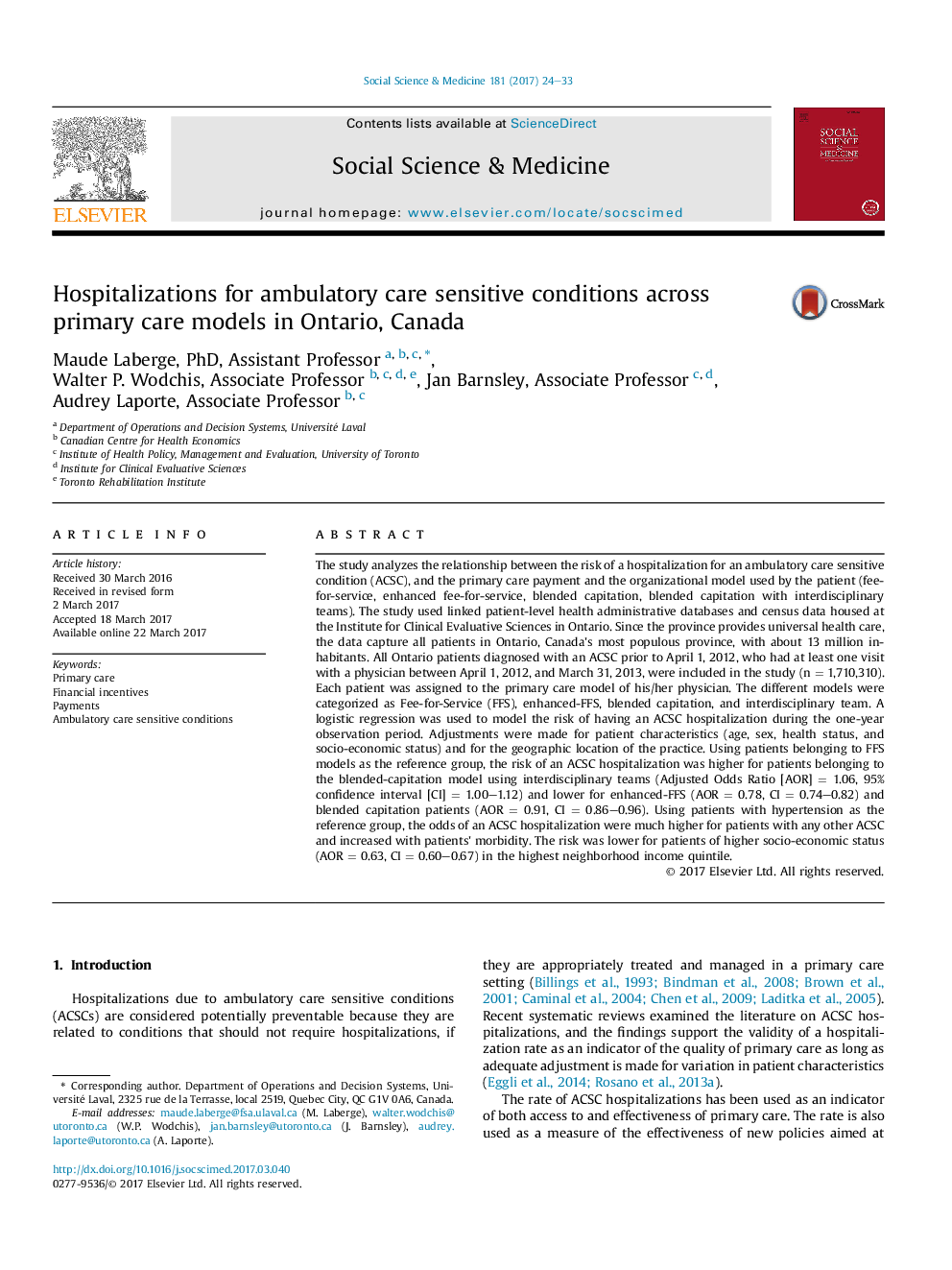| Article ID | Journal | Published Year | Pages | File Type |
|---|---|---|---|---|
| 5046595 | Social Science & Medicine | 2017 | 10 Pages |
â¢Risk of ACSC hospitalization varies by model of payment to primary care physician.â¢Blended capitation payment associated with lower risk of ACSC hospitalization.â¢Enhanced-fee-for-service payment associated with lower risk of ACSC hospitalization.â¢Higher risk of hospitalization for patients in interdisciplinary primary care teams.â¢Neighborhood income negatively associated with ACSC hospitalizations.
The study analyzes the relationship between the risk of a hospitalization for an ambulatory care sensitive condition (ACSC), and the primary care payment and the organizational model used by the patient (fee-for-service, enhanced fee-for-service, blended capitation, blended capitation with interdisciplinary teams). The study used linked patient-level health administrative databases and census data housed at the Institute for Clinical Evaluative Sciences in Ontario. Since the province provides universal health care, the data capture all patients in Ontario, Canada's most populous province, with about 13 million inhabitants. All Ontario patients diagnosed with an ACSC prior to April 1, 2012, who had at least one visit with a physician between April 1, 2012, and March 31, 2013, were included in the study (n = 1,710,310). Each patient was assigned to the primary care model of his/her physician. The different models were categorized as Fee-for-Service (FFS), enhanced-FFS, blended capitation, and interdisciplinary team. A logistic regression was used to model the risk of having an ACSC hospitalization during the one-year observation period. Adjustments were made for patient characteristics (age, sex, health status, and socio-economic status) and for the geographic location of the practice. Using patients belonging to FFS models as the reference group, the risk of an ACSC hospitalization was higher for patients belonging to the blended-capitation model using interdisciplinary teams (Adjusted Odds Ratio [AOR] = 1.06, 95% confidence interval [CI] = 1.00-1.12) and lower for enhanced-FFS (AOR = 0.78, CI = 0.74-0.82) and blended capitation patients (AOR = 0.91, CI = 0.86-0.96). Using patients with hypertension as the reference group, the odds of an ACSC hospitalization were much higher for patients with any other ACSC and increased with patients' morbidity. The risk was lower for patients of higher socio-economic status (AOR = 0.63, CI = 0.60-0.67) in the highest neighborhood income quintile.
